-
Sheldon Pinto
12:41 25th Feb, 2015
Wearables
The Pebble Time Is Here To Rescue The Smartwatch
Just when we thought that the smartwatch had no future, Pebble pulls off the impossible.
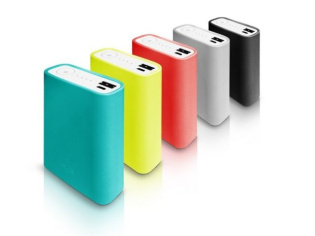
Pebble has pretty much summed up what we wanted in its all new smartwatch called the Pebble Time. The device comes with an industry-first (for smartwatches) colour e-paper display that will allow the smartwatch to pull off a 7-day battery life.
The new smartwatch is not only 20 percent thinner (and a lot less geeky, we might add) at 9.5mm, but also adds a new quick voice replies feature that will allow you to reply back via a voice dictation (voice note) in case you are too busy to get clicking.
That aside, Pebble being the innovator it always was, has even included a new interface for its newest smartwatch. The Pebble Time comes with a timeline interface that simply throws a long (vertically) scrollable timeline with all your pins (app notifications) in a simplified manner.

App developers will soon get a new SDK that will not only allow them to upgrade their apps to take advantage of the new colour e-paper display, but also allow them to build pins for the same.
More so, DIYers will also get all the 3D data they need to build their own strap for the smartwatch that uses a standard 22 mm watch band and is user replaceable. The straps will also see added functionality in the near future.
While Android Wear continues to be the power hog (they barely last a day) of the smartwatch industry and the Apple Watch has yet to be demoed, Pebble’s already ready smartwatch seems to be a success.

This is because the company managed to overshoot its pledged goal of $ 500,000 and has already drawn in $ 7,768,615 (yes, you read that right) in funds from 36,636 backers, just on day one!
The smartwatch can now be ordered for $ 179, as a backer (like right now) or you will have to wait till May for the second instalment and settle for a retail price of $ 199 (approx. Rs 12,500). The smartwatch works with most Android smartphones and definitely works with the Apple's iPhone; but is a bit limited when it comes to the quick voice reply feature.
Love it or hate it, Pebble’s Time is indeed the truly innovative smartwatch (on paper) that the industry needed to speed-up smartwatch development and we simply cannot wait for a proper hands-on. For all the information you need about the Pebble Time, hit the source link below.
TAGS: smartwatch, wearable, Android, iOS, Pebble Time, Pebble
Apple Watch Owners Will Have A Plethora Of Supporting Apps At Launch
Third-party devs have been making a beeline for the company’s Cupertino office to test out their apps.
-
Sheldon Pinto
17:58 17th Feb, 2015
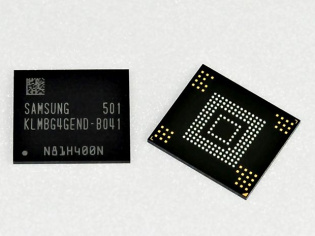
Apple is clearly not resting on its laurels with a record-breaking quarterly performance just yet. The company seems to be busy with its next big thing, the Apple Watch.
News is that plenty of devs have been summoned to Apple’s Cupertino office in California. The company is secretly preparing its app bank helping developers polish their apps before the launch happens.
Indeed Apple would not like to be taken down at its own game. The Cupertino giant has been bringing developers of third-party apps from different areas (sports, productivity and even banks) to get their apps ready before show time.
The source states that Apple has been in constant communication with major banks as well to expand Apple Pay to other countries. This is more so because Apple Watch also supports Apple Pay.
Moreover, this is not just with the Americas but Banks from Europe have also been called in to make the payment process as smooth and flawless as possible.
Apparently Apple has even been mum about who it talks to in the developer community. During the meetings says 9to5mac, “different developers in the room were not identified by name in order to keep each other’s plans private, but they were instead labelled by unique number identifiers.".
Of course with so many developers jumping in and out and having a hands-on on the functioning Apple Watch, news about it had to leak out as well. Some devs became fans of the Digital Crown, while others did not find the Force Touch feature impressive.
No matter what, Apple seems to be taking in developer feedback seriously and will hopefully deliver a polished product by April. This is when Apple plans to launch the Apple Watch globally, as mentioned during the quarterly earnings call.
TAGS: Apps, Software, wearable, Apple Watch
Pebble Smartwatches Are Now Compatible With Android Wear
If you already own a Pebble smartwatch, you will be smiling.
-
Team TechTree
14:55 17th Feb, 2015

After a long Beta test phase, Pebble has finally added support for Android Wear. This means that the Pebble Smartwatch will now be able to understand Android Wear notifications coming from their Android devices and relay notifications from the apps that suppport it.
What’s more is that Pebblers can even use quick responses, that are user defined replies which can be user customised as per the users needs to reply back with just a few clicks.
Those who currently own a Pebble smartwatch will have to upgrade to the latest v 2.9 firmware and then download the Pebble app from the Play Store.

While Google Android wear smartwatches do appear to be advanced, Pebble’s offerings are indeed big on battery life; but will not be able to carry out complex tasks due to the lack of a touch-screen UI. Both the standard Pebble Watch and the Steel currently deliver a 7 day battery life.
TAGS: wearable, smartwatch, Pebble, Android Wear
LG’s Watch Urbane Is A Premium Take On Its G Watch R
Since there’s no focus on the battery life, it’s pretty obvious that there’s Android Wear inside.
-
Sheldon Pinto
11:12 16th Feb, 2015
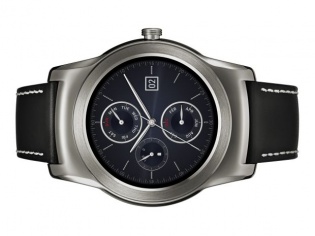
LG Electronics today announced its next offering in the smartwatch space tagged as the LG Watch Urbane. The smartwatch’s highlight is certainly its elegant design. This makes it look more like a timepiece than an electronic gadget, something that many smartwatch manufacturers have been trying to pull off lately, beginning with the ASUS ZenWatch.
It is very easy to describe LG’s next best smartwatch, since it’s basically a LG G Watch R that has been encased in an all-metal body, which is obviously, big on looks. LG has worked on the design bit (clearly, we are impressed) and has managed to narrow down those thick bezels from the G Watch R giving it a thinner profile.

Nothing has changed inside since the G Watch R either as everything from the hardware to the software pretty much remains intact, with a few new watch faces we guess.
- We get a 1.3-inch P-OLED Display (320 x 320, 245ppi)
- Inside hides the same old 1.2GHz Qualcomm Snapdragon 400 with 512 MB RAM and 4 GB of internal memory
- The smartwatch includes all your usual sensors including Gyro, Accelerometer, Compass, Barometer and a PPG (Heart Rate Sensor)
- As usual it is powered by a 410 mAh battery unit and runs Android Wear inside; all encased in a metal construction making it look like a classic timepiece

Since the watch will be available for demo only at the MWC that is set to take place in a couple of weeks from now, LG refused to give out any details about its availability and pricing. The LG Watch Urbane will come in gold and silver and will basically sell as a premium version of the existing G Watch R, meaning that it will cost a lot more as well.
Let's hope that we get to know more details about Audi's LG-made WebOS smartwatch at the MWC as well.
TAGS: wearable, smartwatch, LG, Android Wear, Android, MWC 2015, LG Watch Urbane
Leaked: HTC’s Petra Smartwatch To Sport A 3 Day Battery Life
As with any smartwatch that delivers not your usual standby times, it does not run Android Wear.
-
Sheldon Pinto
18:48 11th Feb, 2015
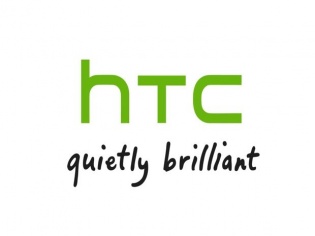
After spending ages in the rumour mill, we get a complete download about HTC’s upcoming smartwatch. Petra as it will be called, functions both as a fitness tracker and a smartwatch.
It will deliver notifications, track your fitness with a 3 day battery life and even tie your shoe laces (just kidding). As you must have guessed by now, it is not powered by Android Wear.
Seems like Google’s Android Wear is getting the boot by many manufacturers these days for power consumption reasons. So technically speaking, if there is one thing we want to witness at this year’s Google I/O, it would be a refreshed version of Android Wear.
That aside, HTC’s Petra will run its own home-brew OS on a ST Micro STM32L151 chipset (built by ST Microelectronics), that will help deliver a jaw-dropping 3 day battery life. Another hardware solution to help deliver that battery life is the flexible 1.8 inch PMOLED display with a resolution of 160 x 32 pixels.
ST’s proprietary ultra-low-leakage process technology with an innovative autonomous dynamic voltage scaling and 5 low-power modes offers unprecedented platform flexibility to fit any application. This is why HTC seems to have gone in for it instead of the usual Qualcomm chipsets.
The smartwatch will come in 3 sizes with IP57 and MIL-STD-810G certifications for dust and water resistance and will weigh just 23 gms.
The Petra smartwatch will launch by the end of March in the USA and HTC will even include a footpad to register accurate step count.
As always this is a leak and we suggest that you take such information with a pinch of salt. But considering that many manufacturers are moving away from Android Wear, HTC must have waited to gauge the market and now may finally be ready for show time.
TAGS: wearable, smartwatch, HTC
iOS 8.2 Beta 5 Reveals Apple Watch Icon, Settings And More
A big update since 8.1, the focus is clearly on the Apple Watch.
-
Sheldon Pinto
11:42 03rd Feb, 2015

While Apple did demo the Apple Watch on stage via a video, the media clearly did not get to play around with the software, let along control the device from an iPhone. This is because the smartwatch from the Cupertino tech giant was indeed not ready. Today, with the release of latest iOS update for developers, tagged as iOS 8.2, we get a little bit of an insight of what things will look like with the Apple Watch.
After the update went live, developers were quick to post the app icon of the Apple Watch. Also as we can see below, the settings layout has leaked out online as well.

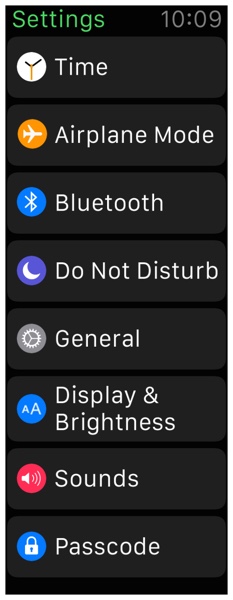
Apple indeed seems to have gone for a long scrolling list, which is great since there are one too many swipes with current day smartwatches.
What indeed remains a mystery is how Apple Watch owners will find all those app icons in that tiny extensive grid layout that will keep getting complicated and extensive as more apps are added and more icons begin to appear.
[Also Read: Apple Watch: Apple’s Most Exclusive Product To Date]
Since so much has already leaked out, we guess that we will get a better idea about the main app drawer soon. This is keeping in mind that Apple’s smartwatch launch has been confirmed to take place in April.
TAGS: Software, iOS, Mobile Phones, wearable, smartwatch, Apple Watch, Apple
AirType Changes Name To Noki; Sends Out Invitations For Beta Program
It has been an extremely long wait, but the project seems to be moving forward.
-
Sheldon Pinto
12:19 29th Jan, 2015
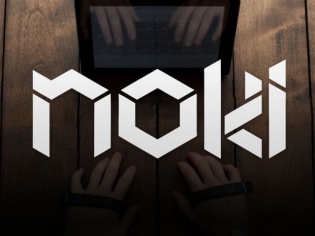
After long period of silence, the AirType team from Texas has finally given us a heads up on what is happening about their interesting product. Seems like the project is progressing and apart from a name change we may actually be able to type on any surface or in the air pretty soon.
AirType has now changed its name to Noki. While the team’s goals remain the same, Noki has finally begun reaching out to interested users for its beta program that will launch by the end of the year.

Noki will not only follow and adapt to your keystrokes (with the help of those hand bands), but will also auto correct what you’re typing thanks to its accompanying app for devices.
The concept is pretty neat and we are interested to see if the company gets it right. If they do, the typing accessory will indeed allow you to type without the need for carrying around a Bluetooth keyboard.
TAGS: wearable, Accessories, Noki
Confirmed: Apple Watch Will Hit Store Shelves By April
Tim Cook made the official announcement during the company’s quarterly earnings call.
-
Sheldon Pinto
13:15 28th Jan, 2015
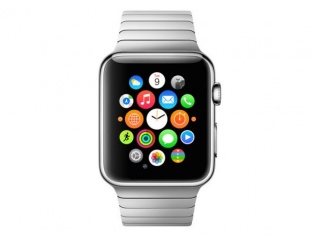
The long list of rumours and insider information about the Apple Watch seems to have forced Apple CEO, Tim Cook to make things pretty much official today. The CEO of the Cupertino tech giant, finally broke his silence about the launch of the Apple Watch and we now know that it happens in April.
The announcement was made during the company’s quarterly earnings call in which Apple’s CEO also thanked his own employees for making the last quarter, Apple’s most successful one yet.
[Also Read: Apple sold a record 74.5 million iPhones in the past quarter]
The launch date of the Apple Watch has been a big mystery since the day it was announced. And while Apple fans (which seems to be growing by the day) cannot wait, it was high time they got something better other than a random “early 2015” launch date.
While the battery life that the smartwatch packs is indeed another mystery, we can clearly state (thanks to leaked information) that it is one of the reasons as to why the device has been delayed.
TAGS: wearable, smartwatch, Apple, Apple Watch
The Next ASUS ZenWatch Will Feature A 7 Day Battery Life
While it seems to be a major challenge for any manufacturer, ASUS has its own ideas.
-
Sheldon Pinto
11:19 27th Jan, 2015

ASUS Chairman, Jonney Shih revealed a bit too much about the company’s ambitious plans for its next smartwatch. The Chairman revealed about the smartwatch at the company’s year-end party; and while a 7 day battery life seems almost impossible, the man does have a plan.
"As a companion device, its central processing unit and operating system should be more simplified than the current version, so that I can use it for up to seven days on one charge, rather than for just two days," said Jonney Shih.
That plan according to ASUS involves building a custom chipset coupled with custom software. While most current smartwatches utilize a Qualcomm Snapdragon 400 with 2 cores on, ASUS states that it will go with the Apple way, building hardware that compliments the software enabling it to pull off a smartwatch with a 7 day battery life.
While Apple’s smartwatch details are scarce at best, we think ASUS may go with an E-ink display similar to Sony in order to pull off the unachievable.
As for the OS, Samsung is still not done with Tizen as can be seen from the leaked information about the Orbis smartwatch, so it seems that ASUS may ditch Android Wear (OS) just for this product.
While ASUS has proved that smartwatches can look beautiful with its ZenWatch, this indeed will be a big challenge for a company with a budding line-up of Android-powered devices. The Chairman also mentioned that the company will be looking at announcing a few (fitness tracking) smartbands by this year end as well.
TAGS: wearable, smartwatch, ASUS, ASUS ZenWatch
Samsung’s Round Orbis Smartwatch Features Leak Out
While it does seem simple to use, those annoying swipe actions persist.
-
Sheldon Pinto
12:13 23rd Jan, 2015
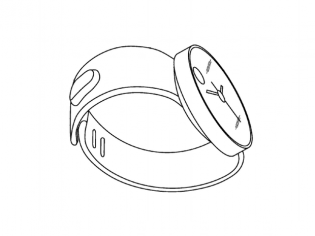
Samsung’s smartwatches business does not seem to be all that successful as of today. If the watches are functional, they look ugly, if they look decent, they loose out on functionality. But Samsung seems to be working hard to remedy this.
Today we get our first glimpse in to the features of the Korean smartphone maker’s long-rumoured round smartwatch. And shape aside, this one seems to be an “all-rounder” in many ways, simply because of the inclusion of two mechanical toggles.
Insiders claim that both the rotary bezel and the digital crown will be used in sync to operate the Tizen-powered smartwatch, now tagged as the Orbis. While the bezel will be used to navigate everything from apps to music and answering calls (via your smartphone), the digital crown will be used for closing apps (much like the back button on Android smartphones).
But those swipe actions have not gone. Thankfully, Samsung has kept these gestures to a minimum. One can simply swipe from the top to the bottom to access settings and toggles like the Bluetooth, battery life and brightness controls. Swipe from the bottom and you get additional options depending on the app your on. For e.g. swiping from the bottom on the music app will give you access to playlists, albums and more.
So yes, Samsung is up to something big with its upcoming smartwatch. We know its going to be round for sure; let’s just hope that Samsung does not go “Samsung” with the design and the new Global Design Head has a say in it.
For more detailed information on the features, hit the source link below.
TAGS: wearable, smartwatch, Samsung
Leaked: Battery Life Statistics About The Apple Watch
Things don’t look too good if you ask us.
-
Sheldon Pinto
11:02 23rd Jan, 2015

It is very hard to pull off great design along with functionality and more importantly a practical battery life when it comes to mobile devices. While Apple does offer some pretty slim products compared to the rest of the industry, it has always done so successfully but with the second iteration of the device.
The same we think applies to the Apple Watch. While the Cupertino giant had no working Apple Watch to demo at the iPhone 6 event in September last year, it sure raised the hopes of Apple fans around the world about building the most revolutionary smartwatch yet. Today, thanks to 9to5mac, we actually have some details about the controversial battery life of the Apple Watch.
From the what we can see things are pretty average at best. The watch is said to deliver 19 hours of mixed usage which ok, considering that you will be using your device for 12 hours at a stretch before you, your cellphone and your Apple Watch hit the charger (its a good night’s sleep for you).
Standby time has been targeted at 3 days, and sleeping mode will help your Apple Watch last up to four days (impressive). Sadly though, all those animations do take a toll on the battery and with the timepiece mode on, the watch will last only for 3 hours.
While Apple has gone in for a custom chip called the S1, there still seems to be a lot of work in terms of optimisation; meaning that all of those 3000 units that are out for extensive testing will stay out for a little longer indeed. Wonder what happens to that expected March launch then?
TAGS: wearable, smartwatch, Apple, Apple Watch
Microsoft Bets Big On Wearables With Its Dorky HoloLens
The headwear fuses 3D holographs to the real world around you.
-
Chandrakant 'CK' Isi
01:28 23rd Jan, 2015
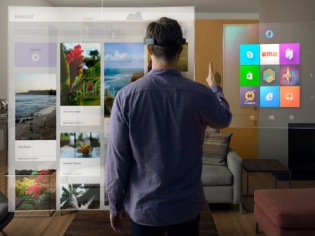
After showcasing the next iteration of its operating system, Microsoft unveiled a wearable computer dubbed Hololens. In simple words, it's a cross between the Oculus Rift and Google Glass. Compared to Google Glass, Microsoft's wearable looks incredibly dorky. Much like the Oculus Rift, this product is not meant to be used outdoors.
The USP of this device is to fuse the richly textured 3D holographs in the real world around you. This holographic computer, as Microsoft likes to call it, is a standalone device. It does not require a PC to work. To render and morph 3D elements on the real world objects, Hololens draws power from a built-in SoC (System on Chip), which Microsoft refers to as HPU (Holographic Processing Unit). According to the software-giant, the HPU is capable of processing terabytes of data from the sensors in real time. The wearer can then interact with the virtual objects with hand gestures.

On the software front, the wearable runs Windows 10. All Windows universal apps will be compatible with the Hololens. Unlike the Google Glass, Microsoft's headgear does not feature a camera, which is actually a good thing if you respect privacy. Going by the promo video, the product seem to be useful in the field of architecture and conceptualisation. Or watch videos and play Minecraft like never before. To find out how much of that turns out to be true, we will have to wait for the Hololens to hit the stores. In the meantime, watch the official Hololens video embedded below.
Product videos are as credible as our politicians.
TAGS: Microsoft, wearable, Oculus Rift, Windows 10, Windows
GoPro Stocks Dip After Apple Receives Patent For An Action Camera
Happens every time the Cupertino giant takes a leap into a new product segment.
-
Sheldon Pinto
12:44 14th Jan, 2015
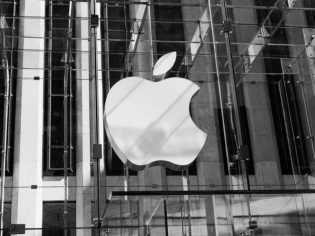
Apple has just received a patent for a filing that was applied long ago. The patent was filed for a GoPro like action camera, that we are sure Apple is working on right now. While the news is pretty interesting, it shocking to see how GoPro stocks stumbled and showed a noticeable drop after news about the patent surfaced on the web.
That news was accompanied by Apple’s remarks in the filing that describe current GoPro models as being susceptible to damage and having “excessive wind resistance”. While these are pretty much the facts when it comes to action cameras, the taunting bit seems to be a bit too much.
What the patent filing reveals is that Apple’s “wind-tunnel” tested action camera will be controlled by its smartwatch. This makes sense since iPhone owners would not want to take their iPhone for a dip in any given situation. So the Apple Watch seems like the right tool for the job. Makes us wonder about how long back did Apple begin working on the Apple Watch.
While this is still a patent, the idea sounds cool and coming from Apple we are pretty sure that the implementation will be spot on as well.
TAGS: wearable, Action Camera, Apple, GoPro
MediaTek Announces Low-Power Chipset Built For Android Wear Devices
With every manufacturer adopting a smartphone chipset, battery life often takes a hit.
-
Team TechTree
17:16 08th Jan, 2015
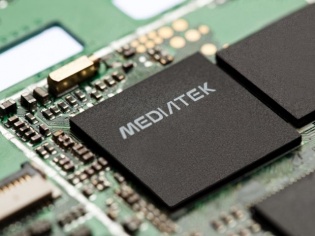
MediaTek has finally announced a new chipset that has been built from the ground up specially for Android Wear-powered smartwatches. The chipset called the MT2601 has been designed to cater to the needs of smartwatches that need to be big on battery life and deliver a smooth experience, while swiping through all those menus.
The MediaTek MT2601 has been designed to be more power efficient compared to the current chipsets used in smartwatches these days. That would include the Snapdragon 400 which was built for budget smartphones but has been used over and over with just two (out of the four) cores on.
Apart from Toshiba and Qualcomm (yes they are working on one) there is almost no other manufacturer that is available to cater to the needs of the Android Wear-powered smartwatches; which is why we now have MediaTek. The chipset has a dual-core architecture with the ARM Cortex-A7 CPU cores clocked at 1.2GHz each. There is a Mali-400 MP GPU, and the chipset supports qHD resolutions that is sufficient for a smartwatch.
While the smartwatch war is at its peak, with more and more smartphone manufacturers releasing their companion wearables (including Apple), it indeed makes sense to cash in at the right moment. With MediaTek entering the game we could expect low cost chipsets as well. That aside, lets hope that the performance is stable as MediaTek chipsets are known for their shaky performance.
TAGS: wearable, smartwatch, Android Wear, MediaTek
LG’s WebOS Smartwatch Was Indeed The Show Stopper At CES
Yes, it can make calls as well.
-
Sheldon Pinto
16:22 08th Jan, 2015
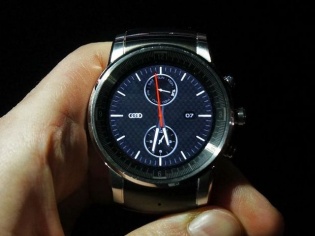
If you invested in a Samsung Gear S, you will certainly cringe in shame after taking a look at what LG has on offer. The company in partnership with Audi (to unlock cars) showcased quite a competitor for the Android Wear smartwatch market in the form of the LG-Audi smartwatch (model number LG-W120L).
What gets your attention is certainly the design of both the hardware and the software. One look and you will be sold about why this watch sits right up there above all those Android Wear-powered smartwatches announced this far (including LG’s own).

Yes, you can place calls on the W120L and you can send across text messages as well. Apart form that, the smartwatch runs LG’s version of webOS, (which LG owns the developments rights of) and things seem to be pretty smooth even though the software showcased in the video below is an older experimental one. Everything from the circular icons to the (optional) rotary motion app menu look perfect. What is even more impressive is how LG managed to keep the swipe actions to a minimum by allowing for scrollable menu’s (there’s barely a learning curve here).
The final polished version of the software will indeed run flawlessly (like the webOS TV UI). Oh, and did we tell you that it can unlock the doors of your car with NFC?
TAGS: wearable, smartwatch, LG, webOS, CES 2015
BlackBerry Unveils Its Android Wear Companion App For BBM
While BBM isn’t going places, we are delighted to see BlackBerry take an interest in the platform.
-
Sheldon Pinto
11:15 08th Jan, 2015
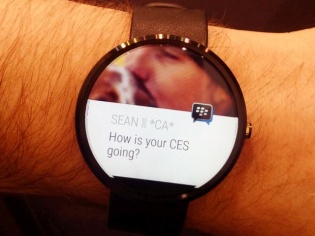
BlackBerry plans to take discreet messaging to the next level with its BlackBerry Messenger companion app for Android Wear-powered smartwatches. The Canadian company announced that it would soon launch the app that seems to be getting polished right now, by early 2015.
Like every other app developer these days that has rolled out support for Android Wear smartwatches, BlackBerry seems to have finally given in an delivered support for the same. The company has now moved a step deeper into the Android platform by introducing BBM for Android Wear.
The app is very similar to the WhatsApp app for Android Wear and will allow you check messages, reply to them and even browse through saved messages with a swipe. BlackBerry takes things a bit further by even letting you review and accept invites while on the move, reducing the need to pull out your smartphone from your pocket.
All-in-all a great companion if your use the BlackBerry Messenger on your Android device.
TAGS: Software, Apps, Android Wear, Android, BlackBerry, BBM, CES 2015
Apple Watch May Hit Store Shelves By March
The company seems to have set its schedule for retail training to begin in February.
-
Team TechTree
16:23 07th Jan, 2015

While many were awed by the Apple Watch when the company unveiled it at the iPhone 6 event in Cupertino, there was nothing other than a video reel and a couple of dummy demo units available for the world to sample. Apple itself was a bit unsure as the company could not give a definite launch date regarding the roll-out of its first wearable. After a number of leaks and assumptions, we have another one. And while the previous ones were simply guesses, this one comes with some information to back it up as well.
News is that Apple has scheduled the launch of its Apple Watch in March. While the Cupertino tech giant had earlier stated a vague “early 2015” time frame for the launch of its first smartwatch, today’s news comes with some interesting bits as well. Seems that Apple has also scheduled the training for the new smartwatch for its store representatives from the 9th to the 16th of February.
The source also mentions that the Apple Watch software is currently being tested and polished, while the company is working on improving the battery and the inductive charging mechanism as well.
But all of this clearly depends on the manufacturing process and also on the software development as these two could lead to a postponement in the above mentioned schedules. As of now things seem to be on track and March is the month planned for the launch.
TAGS: wearable, Apple, Apple Watch, iOS, smartwatch
OnePlus Teases New Accessory; Will Be Announced Today
The company surely knows how to create some drama for its product launches.
-
Team TechTree
09:45 17th Dec, 2014
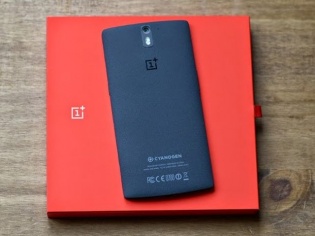
OnePlus has been very busy these days. From adding MaxxAudio support for its OnePlus One handset to keeping in good terms with the Delhi High Court over the ban of its products in India; the company never seems to give up. And that is good news indeed for OnePlus fans as the Chinese smartphone maker has begun teasing yet another product via its social media channels.

The teaser image shows four distinct LED indicators and is accompanied by some text that seems to be hinting at a portable charger or a power bank accessory. Still then, there is a fat chance that this could also be a smartband since Xiaomi had also launched a similar offering abroad for a low price tag. There is again the possibility that this could also be the leaked OnePlus One Mini as well; but smartphones these days come with big displays so we doubt that 4 LEDs would be necessary to indicate battery charge.
The post also mentions that OnePlus has 10,000 reasons to get excited indicating, that stocks of whatever OnePlus has readied will be limited. While the company is busy settling lawsuits with Micromax in India, its good to see that being smaller in size does not stop it from moving forward.
TAGS: Accessories, wearable, OnePlus
Motorola's Moto 360 Begins Receiving The Lollipop Update
A refreshed UI, some new useability features and support for custom watch faces are the highlights of the update
-
Team TechTree
12:55 16th Dec, 2014
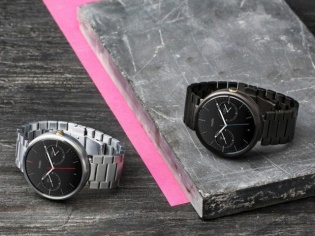
Motorola's take on the Android Wear smartwatch – the Moto 360 – is undoubtedly one of the most popular devices of 2014, and in keeping with its unofficial flagship status Google made it the first one to receive the Lollipop update.
The Internet giant announced back in November that devices running on its new platform (Android Wear) will receive the Lollipop update, and now that time is here. The biggest difference users of the Moto 360 will witness is a thorough overhaul of the user interface, which is now in-line with smartphones running Android 5.0 Lollipop.
Another welcome upgrade is the support for third party watch faces on the Moto 360 which Google had promised. Users will be able to download the app from the Play Store and install them via the accompanying Android Wear app or directly from the device itself.
Other features that come along with the Lollipop update includes something called 'theater mode', that keeps the screen off until a user actually presses on the physical button on the device. There's also improved battery and storage statistics, which will let users keep an eye on the performance of their devices.
While the Lollipop update for the Moto 360 is out, it will roll out to all users over the next few days. Manufacturers usually roll out updates in a staggered manner, so don't fret if your Moto 360 hasn't got its Lollipop makeover just yet.
TAGS: Motorola, Moto 360, Android Wear, Android 5.0 Lollipop, Google
Samsung Launches The Gear VR In The US For $199
The device will be powered by the Galaxy Note 4 smartphone, and will not be compatible with any other device
-
Team TechTree
11:16 09th Dec, 2014

Samsung has finally launched its much awaited Gear VR headset in the US market for $200. The device, as earlier reported, will utilize the Galaxy Note 4 for its screen and processing power, and will not be compatible with any other device.
The Gear VR Innovator Edition, as Samsung says, is specifically targeted at developers and early adopters of the technology. However the company isn't likely to stop anyone from purchasing one, but we suspect limited stocks should take care of that.
As we've heard already, the Gear VR was developed by Samsung along with Oculus, who's software powers the Note 4 when coupled with the VR headset. The company sates that there's already a load of 360-degree viewable content for the device, and that users will be able to develop their own.
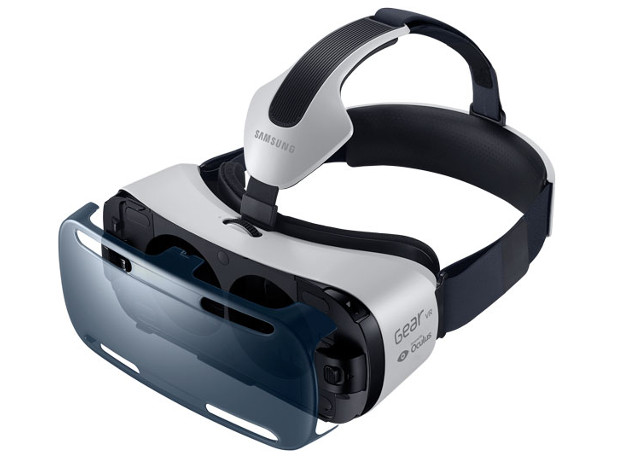
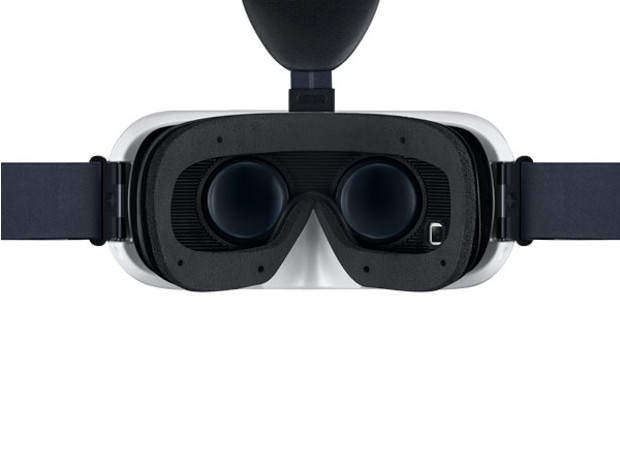
For a lot of the Android games that users will be able to play in immersive mode, Samsung says having an Android game controller will become necessary. Early reviews of the device did speak about it positively, but a lot of improvements could have been made since the showcase and launch.
It's yet to be seen how Samsung really pushes the Gear VR, and more importantly what sort of content gets built for it. There's literally no going back on the progress that's been made in the virtual reality space in the past few months, and with giants like Samsung getting in on the action, there's a lot of exciting things coming our way.
TAGS: Samsung, Gear VR, virtual reality, GALAXY Note 4, Oculus VR
2015 Google Glass To Be Powered By An Intel Processor: WSJ
The device will supposedly offer improved battery life, but there's no word yet on what it might look like or cost
-
Team TechTree
15:49 01st Dec, 2014
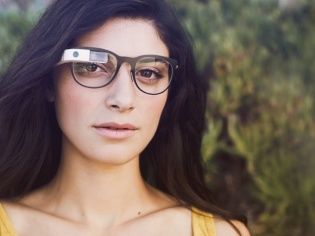
Google will roll-out a new model of its Glass headset in 2015 which will be powered by an Intel chip and offer better battery life, according to the Wall Street Journal. The experimental gadget has already been through a few iterative changes, but supposedly none have been as major as the one planned for next year.
The Explorer Edition of the Google Glass has become easier to buy over the past year, but its $1,500 price tag and still developing use case has restricted sales. With a faster processor, better battery life and an all-new design, consumer interest in the device could grow and finally lead to the device making it to store shelves.
The WSJ report adds that Google's partnership with Intel for Glass will also include marketing the device to hospitals and finding new uses for it in the workplace. However, the report makes no mention of what Intel hardware will be powering the next-generation Google Glass, but there are a few contenders.
Intel has been working hard to develop new low-energy chips in anticipation of the upcoming IoT (Internet of Things) and wearable revolutions. The company even setup the New Devices Group last year to build the next-generation of devices that will drive the multiprocessor revolution.
TAGS: Google Glass, Intel
Is Apple Looking To Enter The Virtual Reality Market?
A job listing spotted by Mashable could point to the Cupertino giant kick starting its development in the space
-
Team TechTree
17:00 28th Nov, 2014
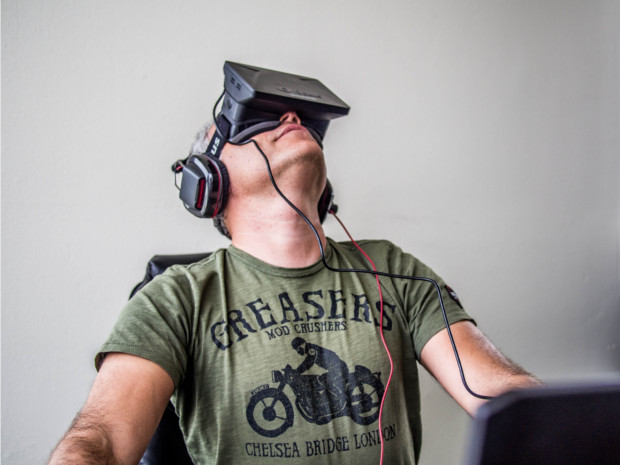
Virtual Reality is being touted as one of the next-generation modes of communication and media consumption, which has caused a massive influx of investment into the sector. Internet giants Google, Facebook and more mainstream hardware manufacturers like Sony and Samsung are creating headway in the segment, but should soon be joined by their arch nemesis Apple.
As spotted by Mashable, the Cupertino giant recently posted a job listing that points at the company increasing its focus on VR. While not necessarily surprising, the finding does go to show that competition in the VR headset market is only kicking off, with many more big ticket entries planned in the coming in the near future.
The criteria for bagging the job requires applicants to be experienced in virtual reality and augmented reality development, which is quite simply put, obvious. Apple states that the holder of the position will create "high performance apps that integrate with virtual reality systems for prototyping and user testing."
According to TechCrunch, Apple's patent machinery has been filing for intellectual rights related to head-mounted display systems from as early as 2006. While the job posting may suggest that Apple will become an active participant in the VR space, it's really hard to say when (if ever) the company will do so.
TAGS: Apple, virtual reality, Headsets, Oculus Rift
Motorola Begins Selling $29 Leather & $79 Metal Band For The Moto 360
It's great to see Motorola taking the market for customization so seriously
-
Team TechTree
14:56 28th Nov, 2014
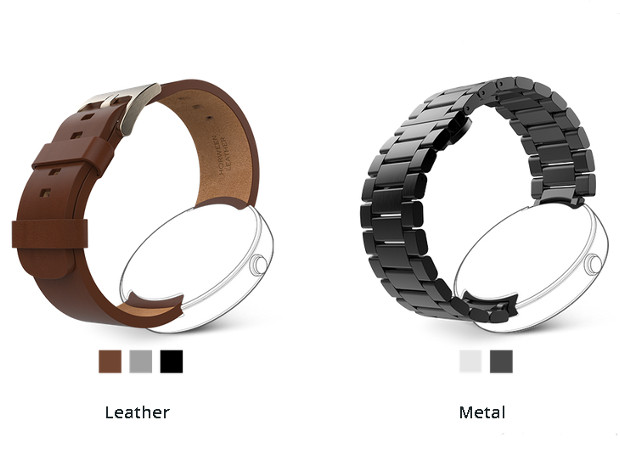
Just in time for the holiday shopping season, Motorola has begun selling individual bands for its Moto 360 smartwatch. The bands will be available in both leather and metal options, and are priced at $29 and $79 respectively.
The leather bands are available in three shades – black, stone and cognac, while the metal bands come in either a dark or light finish. All the recently launched bands are of the same width as the ones the Moto 360 ships with, but the company promises slimmer bands are on the way.
Motorola advises buyers head over to a jeweller in order to get the straps swapped out, given that the process isn't as straightforward as it may seem. An earlier announcement by the company pointed out that more watch band options are on the way, so if you aren't completely bowled over by the current options, it might pay to wait a little longer.
The straps are currently available on Motorola's store in the US, however it isn't clear when they might make their way to the Indian market. E-retailer Flipkart currently sells the Moto 360 in India for Rs 17,999 which is higher than the $249 price tag of the device in the US. It is to be seen what the individual watch bands will cost in India, but be assured that they'll cost a pretty penny.
TAGS: Motorola, Moto 360, smartwatch
Android Wear’s Lollipop Update To Bring New Watch Faces And UX Improvements
Clearly, Android Wear’s current UX is a bit cubersome in a way.
-
Sheldon Pinto
15:11 12th Nov, 2014

Screenshots of Android Wear’s upcoming Lollipop overhaul seem to have made its way online. The leaked screenshots show a plethora of new and refreshed watch faces, but visible changes are not just cosmetic as Google has been working on making the swipe-happy UX even simpler.
While screenshots of the new companion app that runs from the smartphone have leaked online, we now know for sure that there are a lot more improvements under the hood than we had expected. Firstly, you can now change a watch face directly from the Wear app. Next up, is the availability of the new watch face API that allows devs to plug in new features like the weather right there on the watch face. This eliminates the need to access the weather card to check the weather.

Google is also planning to reduce the whole scrolling problem, that forces users to scroll all the way to the settings menu just to change the brightness level of the display. While this may not sound like much, smartwatches without an ambient light sensor leads to owners flicking all the way to the bottom, every time the lighting environment changes. All you will need to do post the update is swipe down to access brightness levels and swipe left to right to change the settings.

Among others, Accessibility features will also make their way onto Android Wear devices, along with a last used setting option that will float on top; reducing the need for you to scroll all the way to the bottom for a particular setting. Now that is a much needed change that we are looking forward to.

We simply cannot wait to see the Material Design influence to the UI and the new improvements in accessing the settings menu show up on our Android Wear smartwatches. More importantly the new update will even deliver watch and battery information to your smartphone, giving you the right estimate about when your smartwatch is going to conk off.
TAGS: Software, wearable, smartwatch, Android Wear, Android 5.0 Lollipop, Google
Sony’s Smartwatch 3 Lands In The US Google Play Store
After a long wait, Sony’s first Android Wear-powered smartwatch is finally available in the US.
-
Sheldon Pinto
15:29 11th Nov, 2014
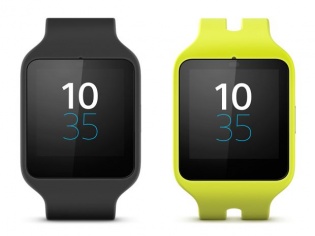
At times it does seem that Sony started the smartwatch craze after all. The company launched its smartwatch series much before the smartwatch trend picked up and stuck to its custom made Android ROMs for running app extensions. This year at the IFA Berlin, we certainly saw a big refresh, not just with smartphones and cameras but also on the wearables front where Sony unveiled its first Android Wear-powered wearables tagged as the Sony Smartwatch 3. Well, the waiting is now over as Sony seems to be ready to bring its Smartwatch to the masses, as the wearable has finally gone on sale in the US.
The Smartwatch 3 has been listed for 249.99 USD (approx 15,000 INR) and comes with the usual smartwatch features that we have been seeing on Android Wear devices ever since the launch of the LG G Watch. While Sony does add its custom touch to it, it is indeed the IP68 certified water and dust proof design that will grab attention, even though it looks simple. The smartwatch also includes a microphone for accepting those “Ok Google” commands that many will prefer using since it does run Android Wear inside and connects to app on your Android smartphone.

Perhaps what is most important about the Sony Smartwatch 3 is the fact that it connects to the Sony Lifeblog app. The app collects fitness data from the smartwatch and displays it in a simple easy to understand collage-like timeline, that allows you to keep track of your sleep and fitness regime with ease.
The Sony Smartwatch 3 is currently only available in Classic Black colour while the remaining, Sport Lime and even the pink and white extra straps have yet to show up. As of today the smartwatch has yet to appear in the Indian Google Play Store. While Sony will sell its smartwatch via retail stores as well, we can expect the device to land in India by next month as we had reported earlier.
TAGS: wearable, smartwatch, Android Wear, Sony
The ASUS ZenWatch Finally Goes On Sale For $199
The device doesn't look as mundane as some of its other square-screened Android Wear counterparts
-
Team TechTree
11:10 10th Nov, 2014
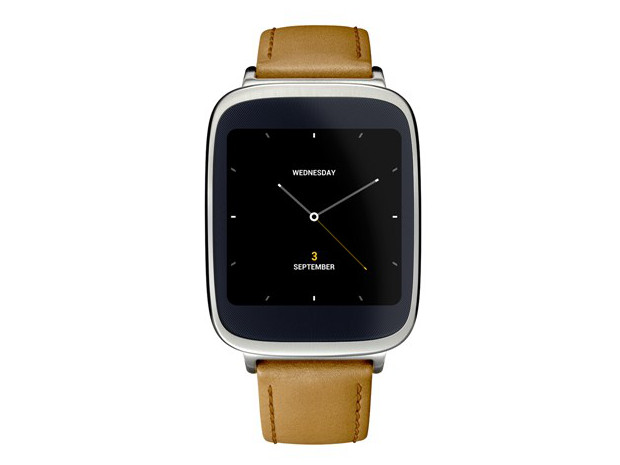
Asus was among the first manufacturers to announce its Android Wear smartwatch at Google I/O earlier this year, and after a long wait we finally have the device hitting store shelves. The device went on sale through Best Buy in the US on November 9 for $199, and will hit the Play Store in the next few days.
The ZenWatch stands out from the rest of the devices running Google's watch OS for a few reasons. Despite using a rectangular form factor, the device doesn't look as mundane as the LG G Watch and Samsung Gear Live (square displays), and manages to look good despite not being round.
There's an inherent advantage of making a rectangular smartwatch on Android Wear, as despite supporting round displays, the UI is clearly more suited for the former display type. When it comes to the UI, the ZenWatch will be the first Android Wear device to feature a more customized interface and software.
It will be interesting to see what enhancements Asus has made with its new found freedom, however from a hardware standpoint it's similar to what we've seen from other manufacturers. The ZenWatch comes with a battery-friendly AMOLED display and easily customizable strap options.
Unlike the Sony Smartwatch 3, the Asus device does not have a built-in GPS module, which means it won't be able to take advantage of Android Wear's latest features. The Asus ZenWatch is priced at $199, which is on-par with similar Android Wear powered devices.
TAGS: ASUS, ASUS ZenWatch, smartwatch, wearable, Android Wear
Motorola Puts The Moto 360 With Metal Bands On Sale For $299
The company will also unveil new software features like My Design that lets users cutomize the watchface
-
Team TechTree
10:01 07th Nov, 2014
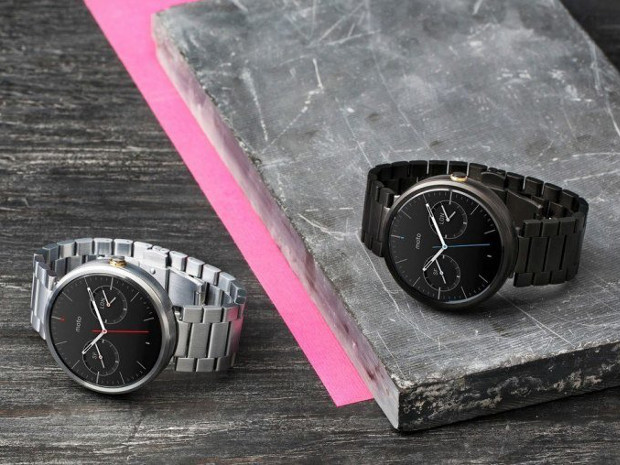
At long last Motorola has finally put the metal bands for its Moto 360 smartwatch on sale, offering users a level of customization that it so furiously publicized during the device's launch. The bands are available in a shade of black and silver, and a Moto 360 kitted out with either of them will retail for $299.
The new straps have a width of 23mm, but the company says that a slimmer 18mm option is on its way, and will retail for the same $299. There will also be a watchband in a champagne shade that takes the price of the device up to $329, alongside three new shades – black, stone and cognac – of leather bands.
Do the metal and regular leather bands not make your cut? Fear not, as Motorola has announced that it's partnering with TTYL to make silicone bands for the Moto 360 in a variety of hues, and DODOcase to offer four new color options in stitched leather variants. The silicone and stitched leather variants haven't gone on sale yet.
Motorola hasn't just brought in a variety of watchbands to help buyers customize, but has has also introduced new features such as My Design, that lets users customize the watch face. They've also included that winnin watchface design from the Moto 360 challenge we had prior to the device's launch.
The company is also introducing its own fitness app, dubbed Moto Body, that tracks steps, distance, heart-rate and calories burned. The above mentioned software features will be available through the Moto Connect app within the next few days. While the watchbands are available for sale in the US through Motorola.com, it is to be seen how soon they make their way to India through Flipkart.
TAGS: Motorola, Moto 360, smartwatch, wearable, Android Wear
Wearable Sales Up By 40 Percent During Q3 Of 2014
Over 12.7 million units were shipped during the quarter, and it is estimated that over 52 million devices will be shipped in 2014
-
Team TechTree
15:48 06th Nov, 2014
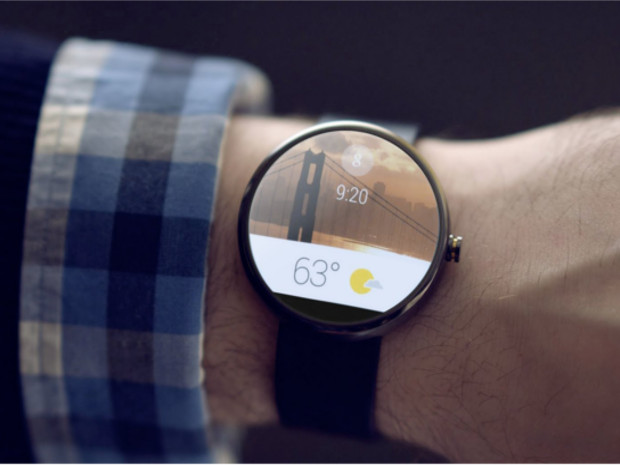
Wearables are touted to be the-next-big-thing in the technology sector and are slowly but steadily making their entry into the mainstream. According to research firm Futuresource Consulting, global wearable sales grew by 40 percent during the third quarter of 2014, clocking in at 12.7 million units.
According to the report, over 52 million wearables are expected to be shipped in 2014, an increase of 32 percent when compared to last year. Moreover, the industry is expected to grow to 74 million units in 2015, as players like Apple begin to sell their devices in the market.
Smartwatches are expected to lead the way of the wearable, with an estimated 101.7 million of them being in use by as early as the year 2019. While there is indeed growth, sales of wearables, especially smartwatches, are only a sliver compared to global smartphone sales.
Futursource expects Apple to lead the smartwatch category once its recently unveiled Apple Watch goes on sale early next year, however we feel its too early to say who the winner will be. While giants Google and Apple have gone down the 'wrist worn tech accessory' route, Microsoft is chasing the health and fitness market.
The Redmond giant recently unveiled Band, which housed 10 different sensors to constantly monitor the wearer's physical activity. Moreover, Microsoft doesn't seem to be all that focused on the hardware market, but is instead using the band as a way to show what its health and fitness software can do.
It's too early to say who's going to own the wearable space, because no manufacturer has nailed the concept. In the coming year or so, we should see quite a few new concepts - be it fitness bands, smartwatches or devices that can do both – make it to the market to gauge consumer response in order to find the winning formula.
TAGS: wearable, smartwatch, Android Wear, Apple Watch, Microsoft Band
Apple’s Gold Watch Will Cost You An Arm And A Leg At $4000
Clearly, there was a reason why the company did not announce the price tags of all its Apple Watch models.
-
Sheldon Pinto
12:26 06th Nov, 2014

The recent iPhone 6 launch saw a lot of interest and an enthusiastic Tim Cook on stage, who was more than happy with the media’s response to the “revolutionary” Apple Watch. While the Cupertino tech giant did not have any functional demo units on display, it was pretty clear that sales would begin by the next year. What we did find out somehow was that the base price of the Apple Watch would begin at 349 USD. Seems pretty normal right? Well news has come from a well known source that the Stainless Steel model will set you back by 500 USD while the Gold version will be priced at a shocking 4000 USD.

Shocked? Well, it’s the same expression out here. While we did expect the Stainless Steel model to cost a bit more, we clearly did not expect the Gold version to cost a bomb. At this price (2,45,000 INR) you could easily buy a mechanical watch from well known horologists from around the world and yes, you would not need to charge it everyday.

Then again the Stainless Steel version does make a bit of sense (at 30,000 INR) and kind of places the Apple Watch in line with the pricing for its iPhones (all things Apple are expensive). Clearly, the 349 USD (21,000 INR) pricing was for the base Aluminium versions. Still then, at the rate at which those iPhone 6 and 6 Plus models sold out in India, we guess that there would be a number of buyers lined up to buy the Apple Watch as well. But that again would depend on the timing, which Apple has so far has planned for Valentine’s Day (so that you can beam your heart beat) in February of 2015, at least for the US market.
TAGS: wearable, smartwatch, Apple, Apple Watch
Flipkart Adds Android Wear Support For Its Smartphone App, But Why?
All users will be able to do is view their wishlists and the odd notification right from their wrists
-
Alnoor M Peermohamed
14:17 04th Nov, 2014
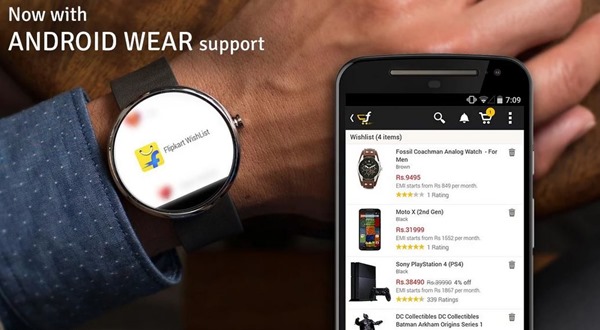
Indian e-retail company Flipkart is banking on its technological prowess to get ahead of its rivals, including American giant Amazon. The company has now become the first e-commerce player in the country to out Android Wear support for its mobile app, pushing notifications right to a users wrist.
For now users will only be able to view their wishlist and the odd notification right from their Android Wear devices, but the company plans to enhance their use of the platform in the future. Information related to order tracking and notifications on price drops are among the features we could see in the near future.
Users will have to download the latest version of Flipkart's app from the Play Store in order to turn on support for Android Wear devices. Moreover the company has also used this as an opportunity to roll out a few new features for its mobile app, including a refreshed UI, and enhanced search to help you find the right products.
The smartwatch market is still at a nascent stage of growth, and it needs as much support from app developers and manufacturers until a strong use case is built. While it's great to see Flipkart experimenting with new things, getting push notifications related to orders isn't something you'd want to do with a smartwatch.
Moreover, the market for smartwatches in India is almost non-existent, eliminating the use of Flipkart's Android Wear app to a very niche segment. The app currently doesn't do enough to find space on a user's wrist, a very valid argument a lot of people have been using to shun the concept of a smartwatch itself.
TAGS: Flipkart, Android Wear, Apps, smartwatch
- DRIFE Begins Operations in Namma Bengaluru
- Sevenaire launches ‘NEPTUNE’ – 24W Portable Speaker with RGB LED Lights
- Inbase launches ‘Urban Q1 Pro’ TWS Earbuds with Smart Touch control in India
- Airtel announces Rs 6000 cashback on purchase of smartphones from leading brands
- 78% of Indians are saving to spend during the festive season and 72% will splurge on gadgets & electronics
- 5 Tips For Buying A TV This Festive Season
- Facebook launches its largest creator education program in India
- 5 educational tech toys for young and aspiring engineers
- Mid-range smartphones emerge as customer favourites this festive season, reveals Amazon survey
- COLORFUL Launches Onebot M24A1 AIO PC for Professionals







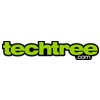


TECHTREE